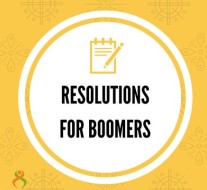Your identity is who you are; however, it is more than your name, address, and social security number. Your true identity of why you are here lies deep in the recesses of your subconscious and spirit. Oftentimes, we identify ourselves by the difficult life experiences, trials, rejections, and obstacles we’ve had to overcome. When we fail to overcome the obstacles, we then begin to look for our identity in other people and possessions. Once we lose our identity, many negative things can fall into our lives by choice, not by chance. So how can you tell if you are a victim of identity theft? Ask yourself these questions:
Do you worry what others think and ignore your own beliefs, values and opinion?
Do you give more importance to how other people will feel about your decisions rather than considering your own point of view?
Of course we all need to consider other people to be decent and sensitive. But if we care too much what others think, we live by our imaginations of others’ thoughts. Ask yourself this critical question: Are you living a true authentic purposeful life? Learning to own your identity, and define your passions and purpose, will place you on a path of growth and success that is unparalleled.
We must understand who we are and what we want from our lives and not leave these critical life choices and decisions in the hands of someone else. As humans, we all need validation, acceptance, and approval from those we love. But if others neglect to design their own lives, how do we expect them to design ours? The sooner we let go of what others think and truly believe in ourselves, our dreams, abilities, and authentic gifts, the sooner we will be headed toward the life of our dreams.
 Picture yourself receiving a beautifully wrapped Tiffany jewelry box. You are so very anxious to open it to retrieve the contents inside. Once the box is opened, and the beautiful 4-carat brilliant rare one-of-a-kind diamond is revealed, you discard the box and cherish, nourish, and take care of the diamond because of its value.
Picture yourself receiving a beautifully wrapped Tiffany jewelry box. You are so very anxious to open it to retrieve the contents inside. Once the box is opened, and the beautiful 4-carat brilliant rare one-of-a-kind diamond is revealed, you discard the box and cherish, nourish, and take care of the diamond because of its value.
 The value of the “rare diamond” appreciates over time. I use this analogy because it describes the value we possess inside of us yet most people place their value on the external extrinsic tangible items and possessions in their life. The power, value, beauty, uniqueness, and one-of-a-kind authenticity we possess on the inside is ours to build up or tear down.
The value of the “rare diamond” appreciates over time. I use this analogy because it describes the value we possess inside of us yet most people place their value on the external extrinsic tangible items and possessions in their life. The power, value, beauty, uniqueness, and one-of-a-kind authenticity we possess on the inside is ours to build up or tear down.
Regardless of what is going on in the world around us (murder, suicide, addiction, bullying, abuse, and toxic mindsets), we have choices of whether we want to get caught up in the vortex of the negativity it brings or we can focus on the internal intrinsic value we possess which is where the true power of who we are, why we’re here, what are our unique gifts, and what difference and contributions we can make in the world lies.


 College can be both challenging and exciting. For college graduates transitioning into the corporate workplace, the challenges and excitement can turn into outright stress and anxiety. For those considering a career in the technology industry, this article will help with the daunting choice of whether to select a traditional degree program or one of the many certification options available.
College can be both challenging and exciting. For college graduates transitioning into the corporate workplace, the challenges and excitement can turn into outright stress and anxiety. For those considering a career in the technology industry, this article will help with the daunting choice of whether to select a traditional degree program or one of the many certification options available. It has been many years since the late Stephen Covey introduced the 8th Habit which focuses on “finding your Leadership voice” which would imply that each and every one of us has one, right? This fact has been up for debate for years depending upon who is offering the advice.
It has been many years since the late Stephen Covey introduced the 8th Habit which focuses on “finding your Leadership voice” which would imply that each and every one of us has one, right? This fact has been up for debate for years depending upon who is offering the advice.

